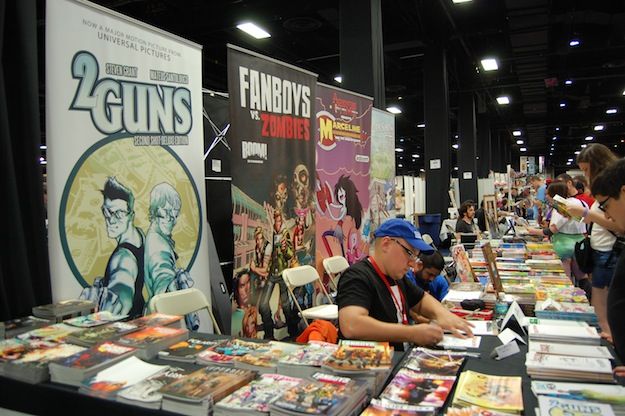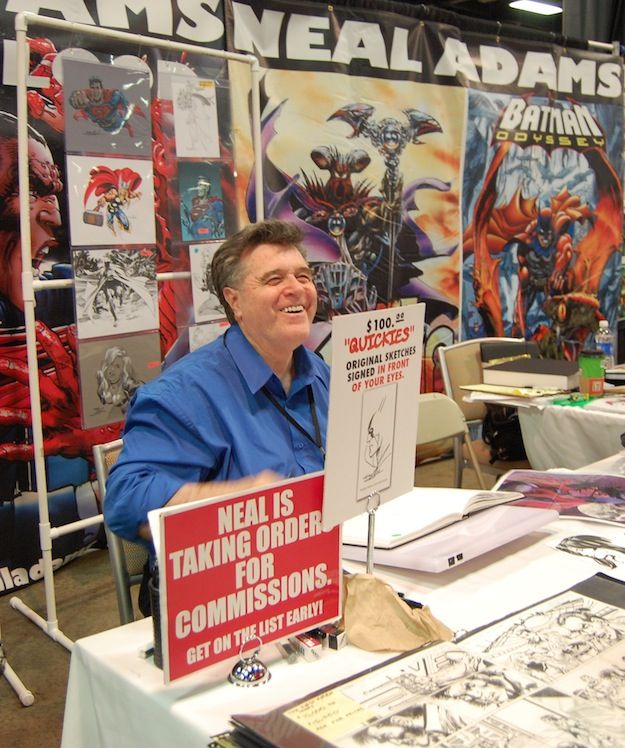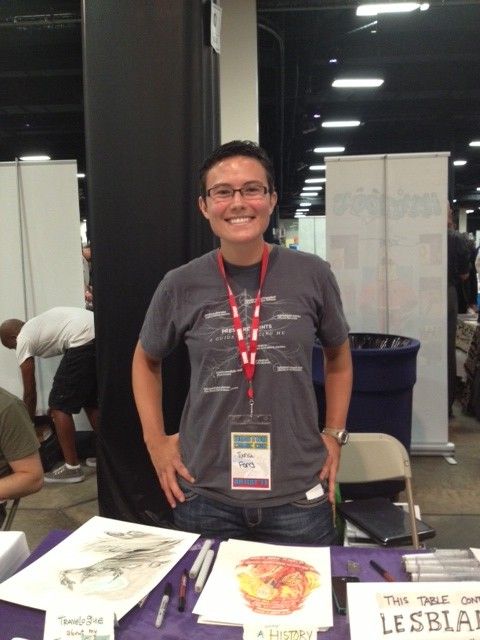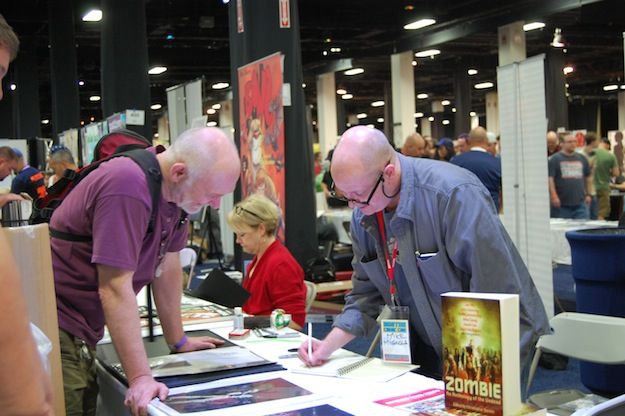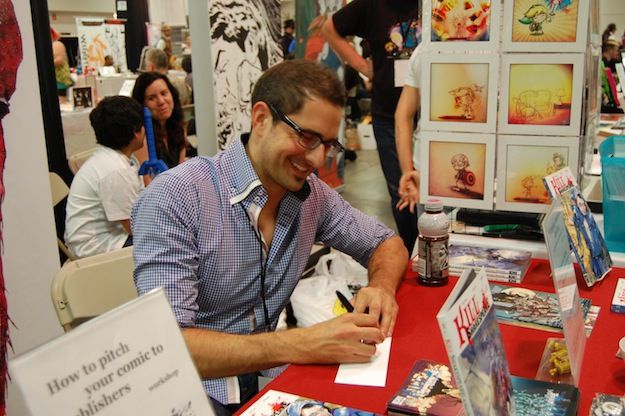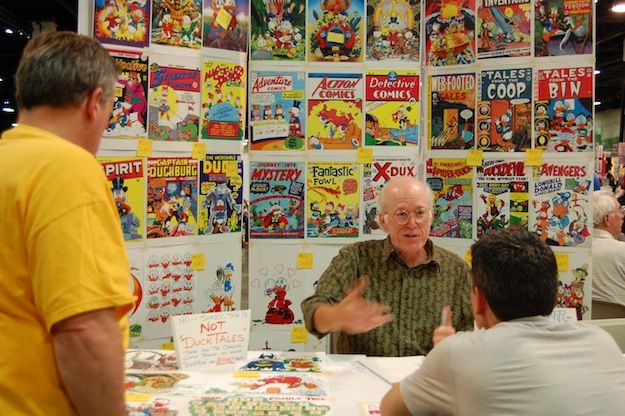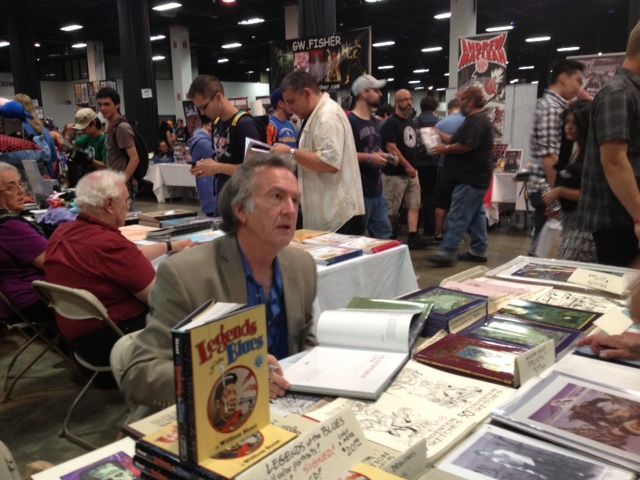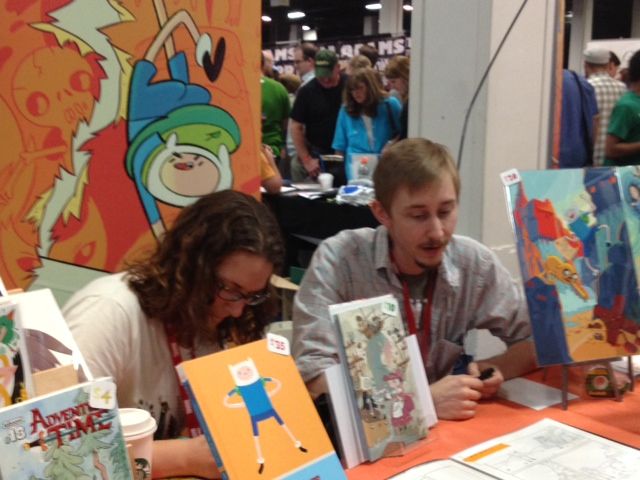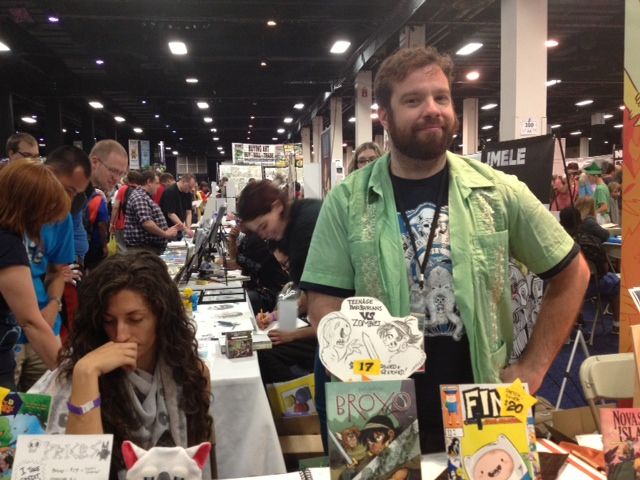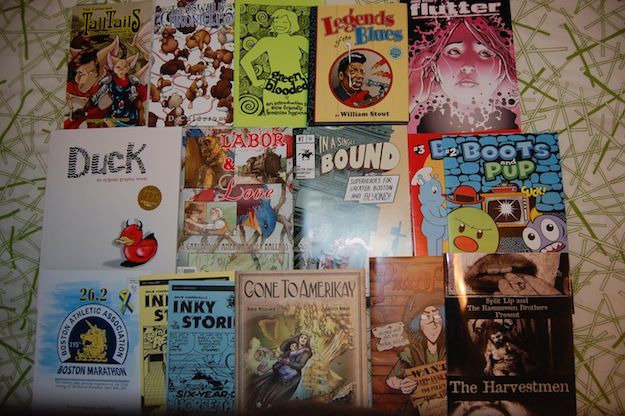This was a tough year for Boston Comic Con: It was originally scheduled for the weekend after the Boston Marathon, and although organizers worked tirelessly not to cancel the event, the venue was within the lockdown zone following the bombings, and the load-in day coincided with the massive manhunt forsuspect Dzhokhar Tsarnaev. In the end, they had no choice but to shut down the convention. As most of the talent was already in town, local retailers sponsored a number of mini-cons.
Despite the cheerful we-can-get-through-this attitude of that weekend, things were looking pretty bleak. And then Boston Comic Con came roaring back, in a new venue and with a new attitude. This year, it felt less like a local event and more like a big-city con, with a smattering of publisher booths and an array of top-tier talent. The convention has grown quickly, from 1,000 attendees at the first con in 2007 to 15,000 last year. This year, with a bigger venue and more guests, I'm guessing the final number will be even higher.
There are growing pains that come with that sort of expansion, and they showed in a classic con problem: long lines. As press, I was able to skip the line, but a friend of mine who arrived about 10 a.m. spent two hours waiting to get in, and I heard the line wrapped around the building. There were a few glitches with the panels as well, and the folks who packed the Waterfront Ballroom for the panel I moderated on independent comics creators were none too happy when the organizers cleared the room, which holds more than 400 people, before the DC panel. Overall, however, the staff worked hard (although there could have been more of them) and the venue was quite comfortable; I generally prefer the Hynes Convention Center, which is located in the heart of the Back Bay and feels like it's really in Boston, over the more generic Seaport District, but the exhibit hall had a nicer feeling than the raw-concrete-and-fluorescent-lights interior of the Hynes, and the ballrooms felt downright luxurious.
The convention floor could have been arranged a little better: The first thing that greeted me when I walked in was a wall of secondhand-comics dealers, just lines of tables filled with longboxes and displays of faded comics in plastic bags. I realize this is a key reason why some people go to comics conventions, and the Boston Globe recently had an article about the importance of Boston Comic Con to local comics retailers, but visually it's boring as hell.
Fortunately, there was plenty of excitement beyond the first row. BOOM! Studios and IDW Publishing both had booths -- I'm pretty sure this is the first time they've been to BCC — and the line to meet Locke & Key creator Joe Hill doubled over on itself at one point. Scott Snyder and Mike Mignola were other big draws. Bill Willingham held court at the end of a row, and at his booth, Neal Adams seemed to be smiling the whole time. The guest list also included Steve Niles, Terry Moore, David Petersen, Colleen Doran, George Perez, Howard Chaykin, Ming Doyle, Brian Azzarello, Amy Reeder and James O'Barr. That's a lot of talent for a relatively new con.
One of the reasons I go to shows, though, is to find talented new creators whose work I haven't seen before. This time my find was Tana Ford, a graphic novelist whose drawing style is a bit reminiscent of Evan Young's — she has a strong line, a graphic black-and-white feel, and characters with real personalities. She also does some interesting things with paneling and two-page spreads. I picked up her graphic novel Duck and another one about the Boston Marathon, and I'm looking forward to diving into both soon. I was also thrilled to pick up a copy of Jennie Wood's Flutter, which The Advocate called "one of the year's best LGBT comics," and to meet the creator of the steampunk webcomic Boston Metaphysical Society. The members of the Boston Comics Roundtable were there as well, with the latest issue of their Boston-centric superhero anthology, In a Single Bound.
The exhibit floor didn't seem to make a strict division between Big Names and artists' alley creators. Generally, the better-known creators had bigger spaces and often they were placed at the ends of the aisles. This made for a very nice dynamic, with big crowds going past all the tables; I would guess it made for more exposure for the emerging creators.
Aside from the glitches, everyone seemed to be having a good time. It seemed like there were fewer cosplayers than I have seen at previous shows, but that's just my impression. There were a good number of children, and quite a few came to the panels I moderated. The show floor got quite crowded in the middle of the day, although it thinned out a bit toward late afternoon, and judging from the full bags I saw and the comments I heard from creators, sales were good.
Overall, this was a good year for Boston Comic Con. The show has always had enough big-name creators to attract some attention, but this year there were a lot more. At the same time, it's more accessible than big shows, simply because it is small and local. The creators were simply out there at their tables, and the overall vibe seemed to be relaxed. There was just a single track of panels, but they were all strong. And there were a handful of nerdlebrity guests — talent from The Walking Dead, True Blood and The Hobbit — but for the most part, this was a show that put comics front and center, and did a good job of it, too.

